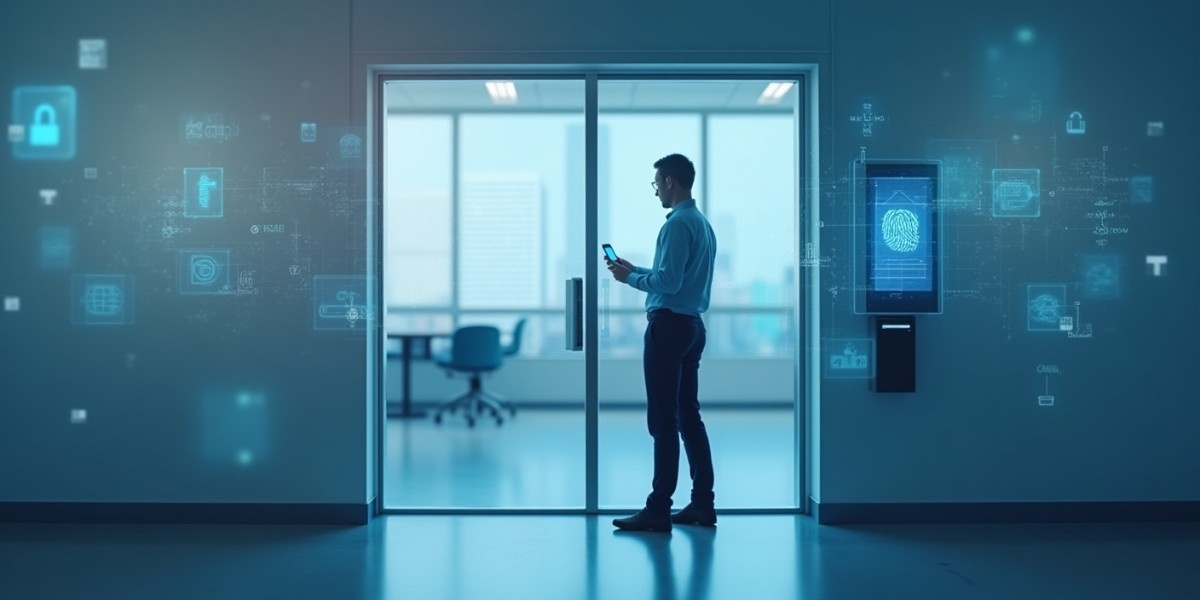The pandemic is the genesis of some of the most pressing access control needs in workplaces. This life-changing world event has significantly changed how we work and our relationship with our workplace on multiple levels. Hence, in this new series exploring the future of work based on modern workplace security, we will help you understand the key elements that make a smart access control system and the hurdles it can solve for your workplace. We will delve into topics on the allowed access and the enhanced security measures it provides.
The blog will also explore the latest in the world of technology and the advancements when it comes to the development of a secure and efficient access control system.
Organisations have been adapting to the post-pandemic new normal, and in this process of adaptation, the implementation of the most essential access control system is the key for workplace security and efficiency.

Below are the drivers that have resulted in the heightened need for your workplace to not just adopt access control but also to stay ahead of the curve as a necessary component to ensure the safety and security of employees and assets:
1. Tackle unpredictable visitor flow
In this post-pandemic workplace, more people are coming in and out of offices with less predictability to a greater extent, highlighting the importance of a flexible and agile access control system. Traditional access control systems that rely on physical cards and manual authentication are the limiting factor in keeping pace with the unpredictability of visitor traffic, both external and internal.
2. Secure your digital and physical perimeters
IT teams can be overwhelmed by a record volume of cyber and physical security threats, with hackers taking advantage of the chaos and uncertainty brought about by the pandemic. Organisations need access control solutions that adapt to changing security threats and provide reliable protection against unauthorised access.
3. Enhancement of security in co-working spaces
With flexible offices and co-working spaces gaining momentum, finding a streamlined way to distribute access and maintain security can be a struggle. With multiple tenants and a wide range of employees, ensuring everyone has the appropriate level of access to different parts of the building at other times can also be challenging.
4. Simplify on-site staffing challenges
The pandemic has made it more difficult to maintain a consistent on-site staff, which comes with a whole set of challenges for package management and receiving deliveries from personnel allowed to access the premises. Access control can help address these challenges by ensuring authorized personnel can efficiently manage and track incoming packages and deliveries.
Access control systems, based on the ability for remote management and real-time updates, can be helpful and ensure that only personnel that has gone through the authentication and authorization process can access sensitive areas.
5. Navigate security and compliance concerns
If there is one thing this pandemic has taught the world, it is to be prepared for what the future may bring. Amidst this uncertainty, access control is required to minimize the risks brought about by security and compliance concerns, for example, a potential breach of sensitive data or unauthorized access to restricted areas.
But what is even more critical from an access control perspective is the need for these systems to be flexible, easily adaptable and scalable to respond to the dynamic infrastructural needs of the workplaces.
6. Prioritise employee experience without compromising security
Access control solutions are vital to maintaining the security and the safety of an organisation. But in today’s world, companies also need to provide the best employee experience possible, ensuring a balance of security that meets their needs. Balancing security requirements with employee experience is one of the biggest challenges for organisations today. But the challenge in balancing workplace experience with security and compliance requirements is ensuring employees feel comfortable with the security measures.
While security is crucial, employees must also feel that their privacy is protected. If employees feel that the added security measures are not the right balance and compromise their privacy, this can harm the employee experience. Additionally, younger workers bring different priorities, emphasizing the employee experience even more. As a result, companies need to find the sweet spot where security is maintained without compromising the experience of a user.
And so, the need for organisations to invest in modern access control solutions today arises from a practical, functional point of view of security and a very human, experiential side of contemporary workplaces.
5 access control technologies you didn’t know you needed
Certain kinds of access control technologies have especially gained prominence in recent times. It is essential to be aware of and implement these today.
1. Remote access
With remote work becoming more common, many organizations have had to implement new access control systems that allow a user to access company resources from home. This ensures secure and convenient remote access to essential tools and information.
This has required implementing secure remote access technologies like VPNs to ensure that the user has access to the company resources securely, unlike physical access control systems which require physical authentication and authorization from the user.
2. Health screenings
Many organizations have implemented complete health screenings as part of their access control protocols after the pandemic to ensure that individuals or users are who they say they are. Under the current protocols, employees and visitors must undergo temperature checks, answer health-related questions, or complete other health screenings before entering a facility or office. This is an essential measure to ensure a safe environment with a reduced risk of transmission.

3. Contactless access
Many organisations have implemented contactless access control systems to reduce the transmission risk from the physical handling of cards or keys.
This includes providing the right keycards or mobile credentials that allow the user to enter a facility without touching a shared surface.
4. Restricted access
The most common practice among organizations is to restrict access to software and specific facility or workplace areas for security reasons. You can restrict access to a certain website or high-traffic areas, or you can implement one-way traffic flow to reduce congestion.
5. Capacity management
Organisations limit the number of people in a facility to maintain social distancing at any time, and access control systems can be used to manage capacity and prevent overcrowding.
Ready to overcome access control challenges?
Empower your workplace with Veris smart access control solutions. Streamline security, enhance convenience, and future-proof your organization.
Schedule a demo today or connect with our workplace consultants to find the perfect solution tailored to your needs.
Our latest ebook can also give you more insights into access control systems.






































.avif)
.avif)





